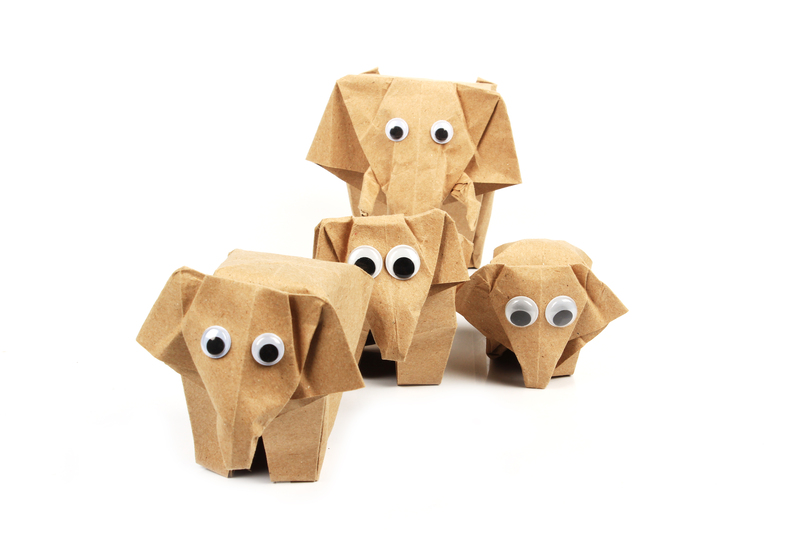Simple Actions to Dispose of PPE in an Eco-Friendly Way
The use of personal protective equipment (PPE) skyrocketed globally during the COVID-19 pandemic. From disposable masks and gloves to face shields and gowns, these items have been essential in controlling the spread of diseases. Yet, the surge in single-use PPE has also resulted in a significant environmental challenge: massive amounts of non-biodegradable waste. How can we effectively reduce the environmental impact of PPE disposal? In this comprehensive guide, we'll explore eco-friendly methods to dispose of PPE, practical tips for individuals and institutions, and how you can play a role in safeguarding our planet.
Why Eco-Friendly PPE Disposal Is Crucial
PPE items--particularly those made of plastics, like masks, gloves, and protective gowns--can take decades or centuries to decompose. Improper disposal, such as littering or tossing PPE with general waste, leads to pollution in landfills, streets, and even oceans, where wildlife is at risk of ingestion or entanglement. Aside from environmental risks, contaminated PPE can contribute to public health hazards.
- Microplastics: Disposable masks and gloves often break down into tiny plastic particles.
- Harm to wildlife: Animals can mistake PPE for food or become entangled.
- Public health risk: Used PPE can spread infectious agents if mishandled.
Implementing sustainable PPE disposal practices is not only an individual responsibility but a cornerstone of community health and environmental stewardship.

What Is PPE Made Of?
Many single-use PPE products are made from non-biodegradable plastics like polypropylene, polyethylene, and latex. Understanding what PPE is made of helps to identify the best ways to recycle or dispose of it in an eco-friendly manner.
- Disposable masks: Usually constructed from polypropylene layers.
- Gloves: Made from nitrile, latex, or vinyl.
- Face shields: Polycarbonate or PET plastic components.
- Gowns and shoe covers: Often a mix of synthetic polymers.
This composition is central to developing sustainable PPE disposal practices and guiding recycling solutions.
Simple Actions for Eco-Friendly PPE Disposal
1. Never Litter - Use Proper PPE Disposal Bins
The most straightforward way to dispose of PPE sustainably is to always use designated trash receptacles. Many communities now provide special bins for PPE waste in public places. Always look for marked containers and encourage others to do the same.
- Place used PPE directly in covered bins: This prevents wind dispersal and wildlife access.
- If PPE-specific bins aren't available: Use a general waste bin, never recyclables.
- Seal PPE in a bag: Especially if contaminated, to reduce spreading pathogens.
Tip: Carry a small, sealable bag with you to store used PPE until you find a proper disposal point.
2. Avoid Recycling Used PPE with Other Plastics
While PPE like masks and gloves are made of plastic, most recycling centers do not accept contaminated PPE due to health and processing concerns. Placing PPE in recycling bins can disrupt recycling streams and increase risks for workers.
- Don't place PPE in standard recycling: Only use approved PPE recycling programs.
- Check for local PPE recycling options (see next section).
3. Explore Specialized PPE Recycling Programs
An increasing number of organizations offer PPE recycling solutions. Companies like TerraCycle provide mail-in or drop-off PPE recycling programs for masks, gloves, and protective clothing.
- Find local or national PPE recycling partners: Many work with offices, schools, and healthcare providers.
- Mail-back services: Collect used PPE in a provided box and send it for safe recycling.
- Partner with your employer or local council: Suggest starting a PPE collection and recycling initiative.
Recycled PPE can be processed into benches, construction materials, or new plastic items, keeping waste out of landfills.
4. Opt for Reusable, Washable PPE When Possible
One of the most impactful and eco-friendly PPE disposal alternatives is to switch to reusable and washable PPE products where it is safe and permitted--such as cloth masks, non-medical gowns, and face shields.
- Cloth masks: Wash after use with hot water and detergent.
- Reusable face shields: Clean surfaces with disinfectant wipes.
- Washable gowns and covers: Follow manufacturer's cleaning instructions.
Note: Always follow public health guidance and use single-use PPE in medical settings when required.
5. Cutting Straps Before Disposal to Protect Wildlife
Wildlife can become entangled in the ear loops of masks or straps of gowns and face shields. Before disposing of PPE, simply cut the straps or bands to prevent this hazard.
- Cut mask ear loops and glove cuffs: Reduces risk to birds and marine animals.
- Break down larger items: If safe, cut gowns or visors into smaller pieces.
Minor effort for you, but a lifesaver for countless animals. This is an easy step every individual can adopt.
6. Secure PPE in a Lined Bin
Wrap used PPE, especially if it may be contaminated, tightly in a bag before placing it in a lined waste bin. This minimizes risks for sanitation workers and prevents the wind from spreading waste.
- Use double-bagging if illness is suspected.
- Always close the lid of PPE bins tightly.
7. Encourage Workplace and Community Change
Individuals can make a big difference, but institutional action is essential for lasting impact. Encourage your workplace, school, or community organization to implement sustainable PPE disposal protocols.
- Provide labeled PPE waste and recycling bins.
- Offer training and signage about proper disposal practices.
- Partner with eco-friendly PPE suppliers.
8. Get Creative: Upcycling PPE for Art or New Products
In some cases, clean and unused PPE items can be repurposed for non-medical uses or art projects. For example, unused masks or gloves can be used in craft projects, model-making, or as protective liners for cleaning tasks.
- Always ensure PPE is clean and unused before upcycling.
- Never upcycle contaminated or worn PPE.
Upcycling is not a large-scale solution, but it can help raise awareness about sustainable PPE management.
What About Biodegradable PPE?
As demand for eco-friendly PPE options grows, many manufacturers now offer biodegradable masks, gloves, and gowns made from plant-based or compostable materials. These items are designed to break down faster and have a smaller environmental footprint.
- Look for certified compostable PPE where available.
- Follow manufacturer disposal guidelines: Some biodegradable PPE needs to be composted in industrial facilities.
Remember: Even biodegradable PPE should not be littered, as it still poses issues for wildlife during decomposition.
Common Questions About Sustainable PPE Disposal
Can Masks and Gloves Be Placed in the Recycling Bin?
No. Even though they are made of plastic, most municipal recycling programs do not accept used masks and gloves because they pose a contamination risk and cannot be easily processed with other plastics.
What Should I Do If There Are No PPE Disposal Bins Around?
Carry a sealable or zipped bag to temporarily store your used PPE. When you reach home or a safe facility, dispose of it in the general (non-recycling) trash, following the tips above.
Can I Compost Biodegradable PPE at Home?
Only if the packaging specifically states home compostable. Many biodegradables require the high temperatures of an industrial compost site to fully break down.
Why Is Cutting PPE Straps Important?
Small action--huge impact. Animals can easily become entangled in mask loops or elastic bands, leading to starvation or injury. Always cut or break the straps before discarding.
Who Should I Contact for Local PPE Recycling?
Ask your local municipality, waste management company, or environmental organizations about PPE recycling initiatives in your area. Many pharmacies and large retailers now offer special collection bins.

Eco-Friendly PPE Disposal: Do's and Don'ts Checklist
- Do: Use designated PPE bins or general waste bins, sealed and lined.
- Do: Cut straps before disposal.
- Do: Opt for reusable PPE where it is safe and allowed.
- Do: Explore mail-in or collection recycling services.
- Don't: Place used PPE in recycling with other plastics.
- Don't: Litter masks, gloves, or gowns in public spaces.
- Don't: Compost PPE unless certified home compostable.
Summary: How to Dispose of PPE Sustainably and Safely
Responsible and eco-conscious PPE waste management is directly linked to the well-being of our environment and communities. By taking small, simple actions--using proper bins, exploring recycling options, cutting straps, and favoring reusable items when possible--you become part of the solution.
- Reduce PPE waste at the source: Choose reusable options, and buy only what you need.
- Dispose of single-use PPE correctly: Use general waste bins, not recycling.
- Support eco-friendly PPE innovations and recycling programs through advocacy and participation.
Let's make it second nature to choose sustainable PPE disposal methods every day--because protecting our health should never come at the expense of our planet.
Join the movement for greener, safer PPE disposal. Your actions matter.
```